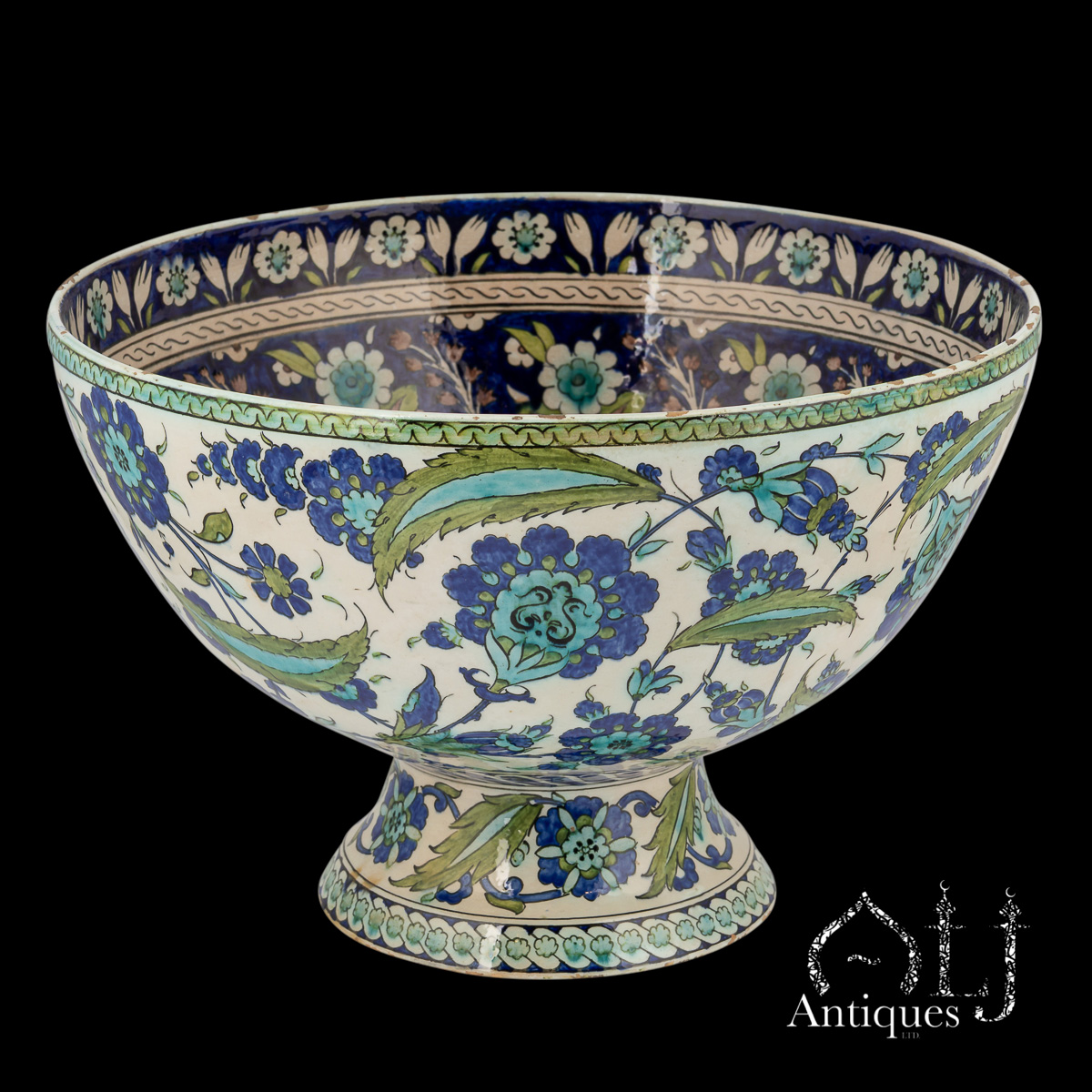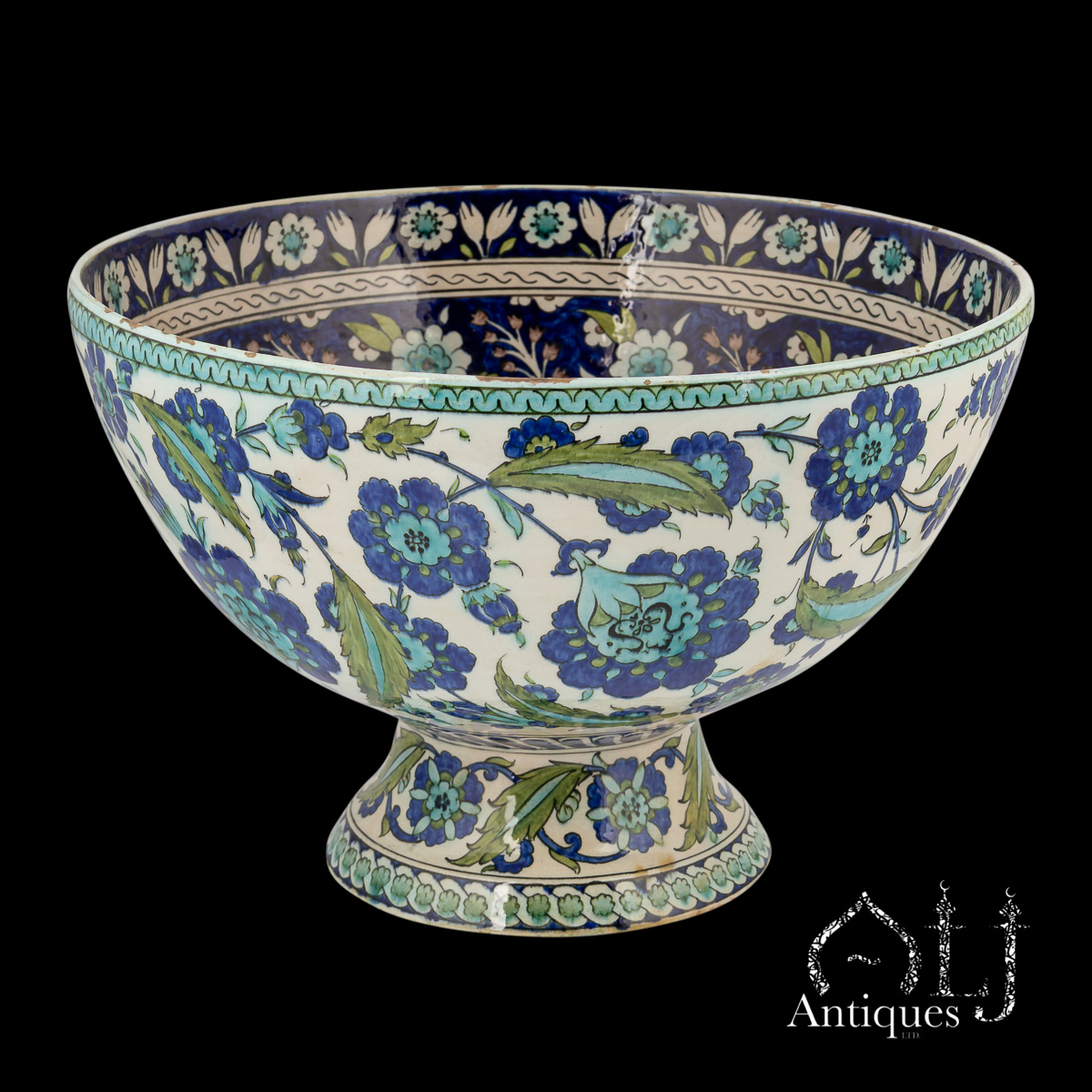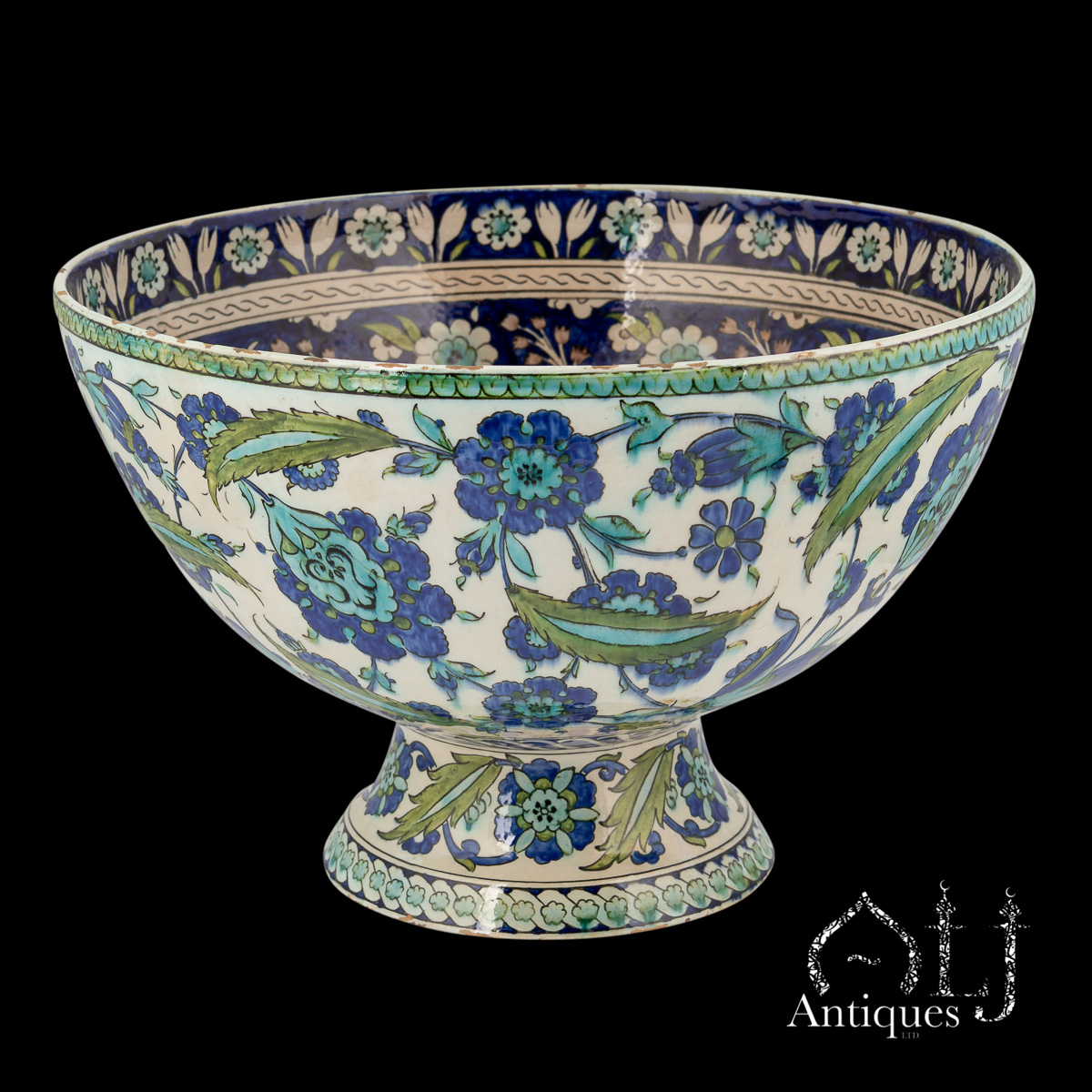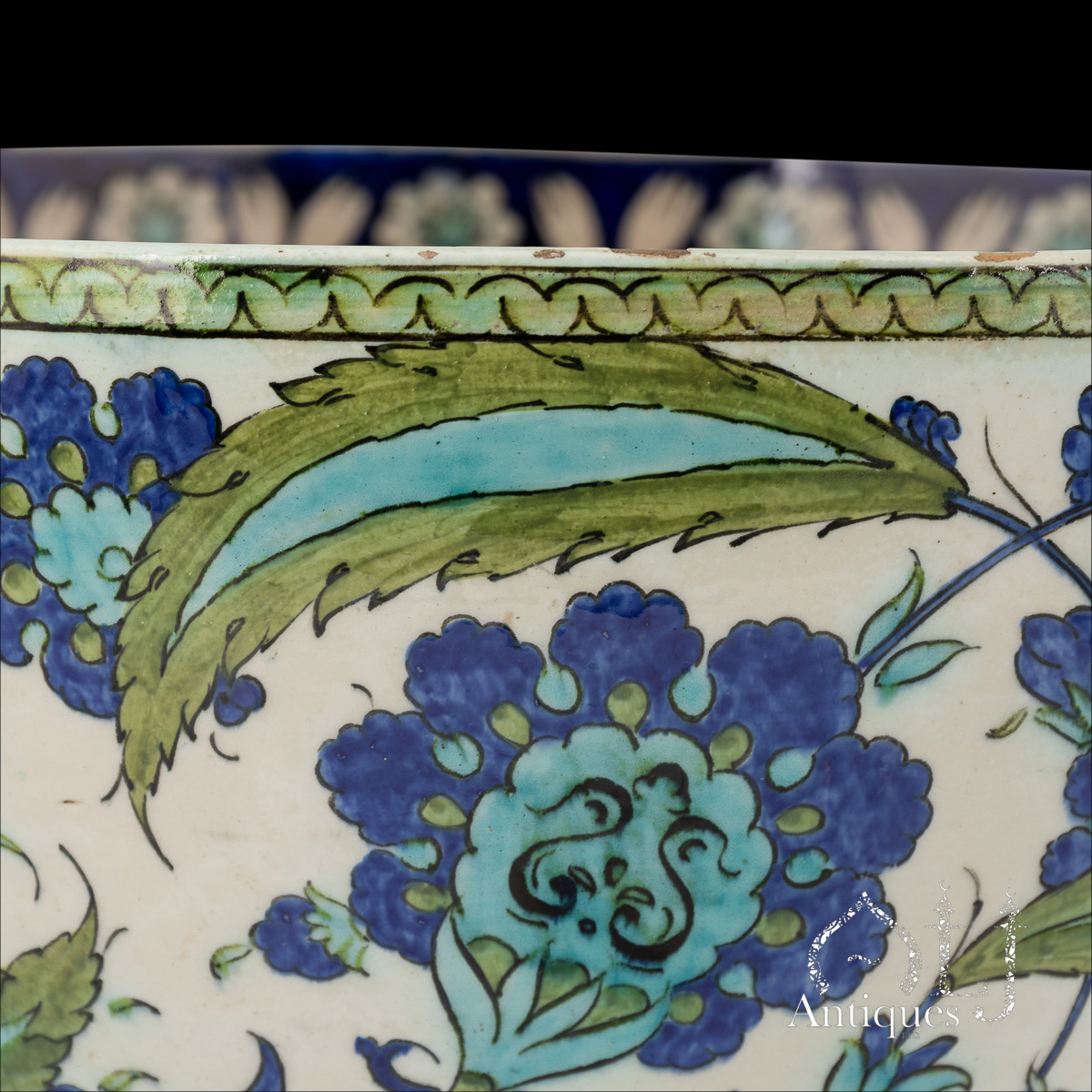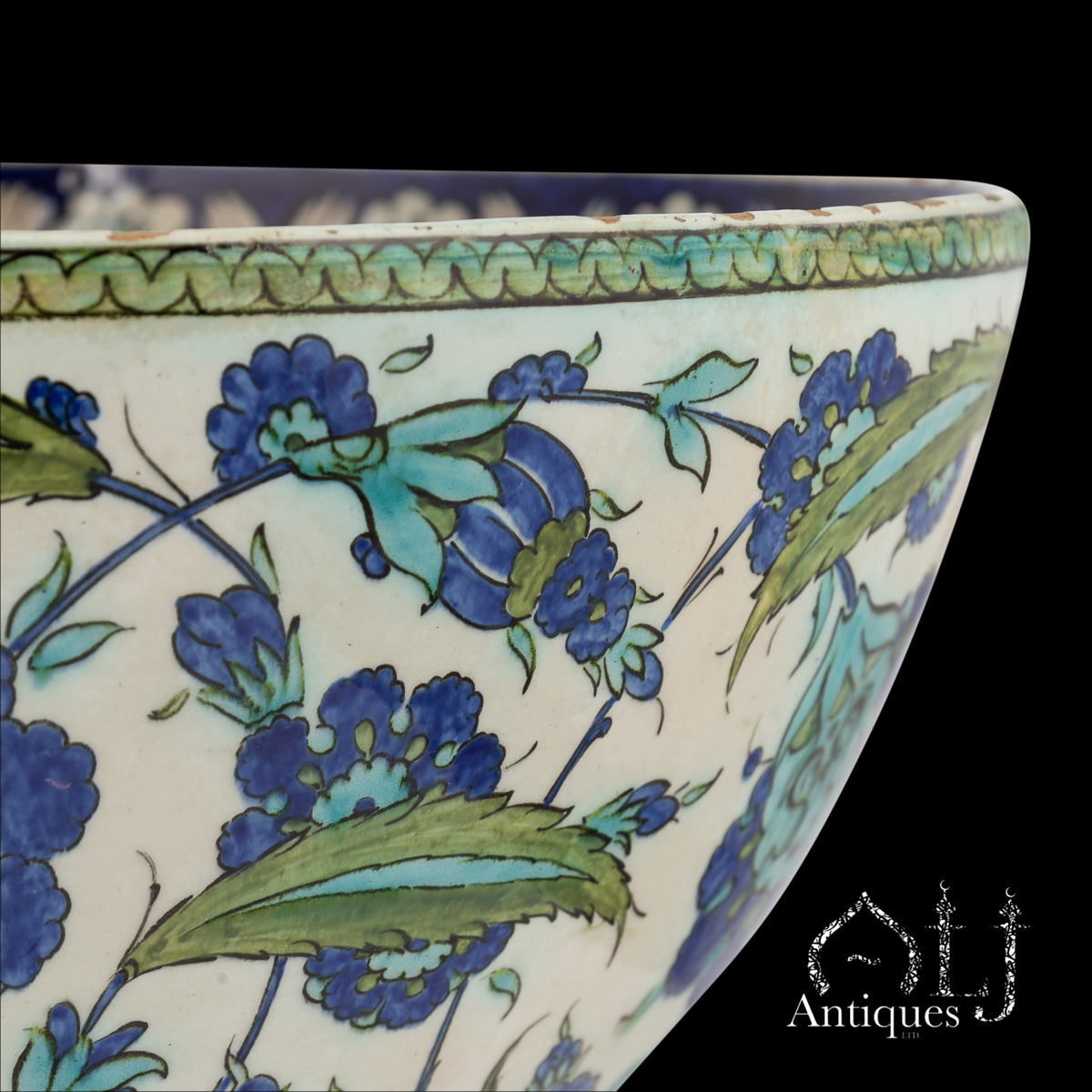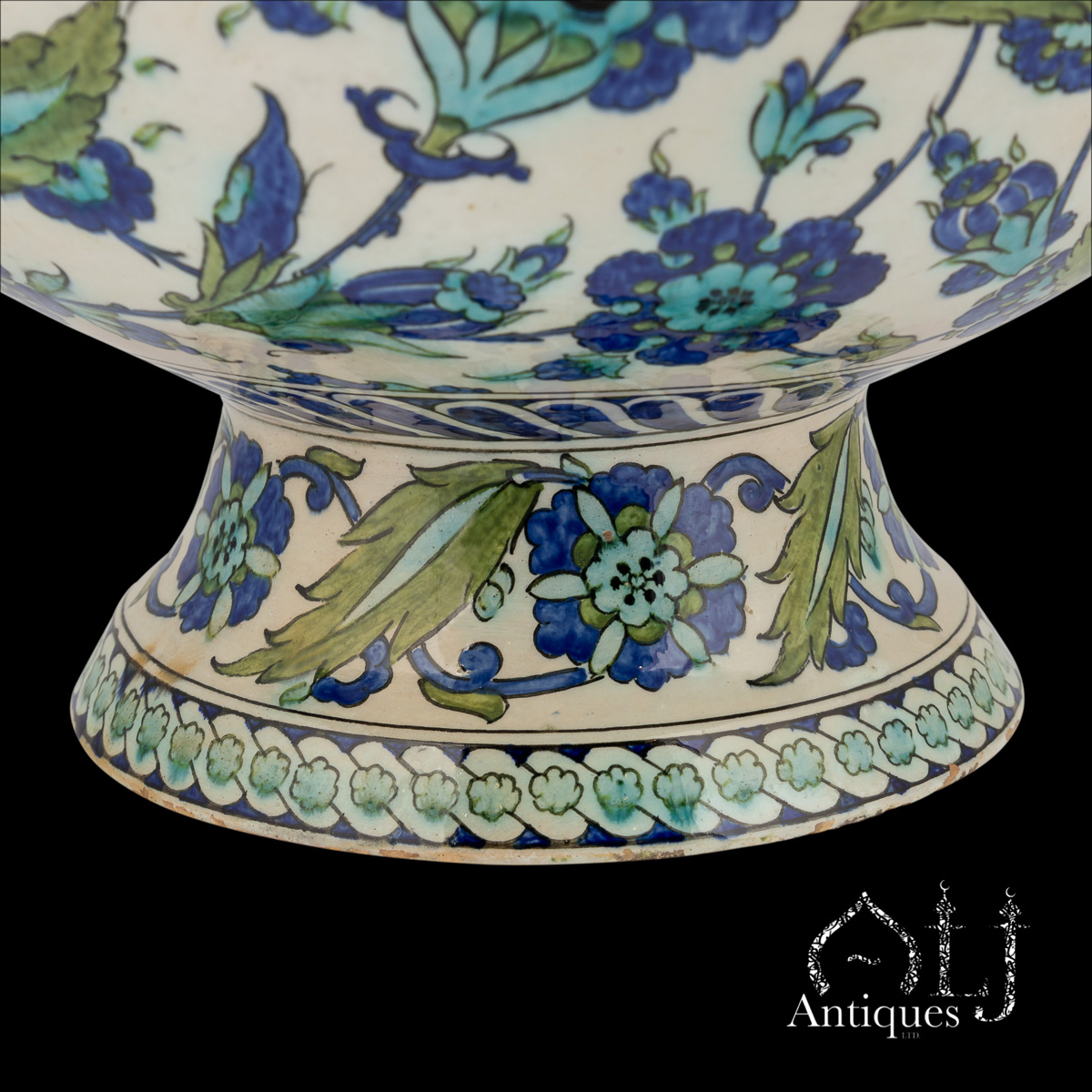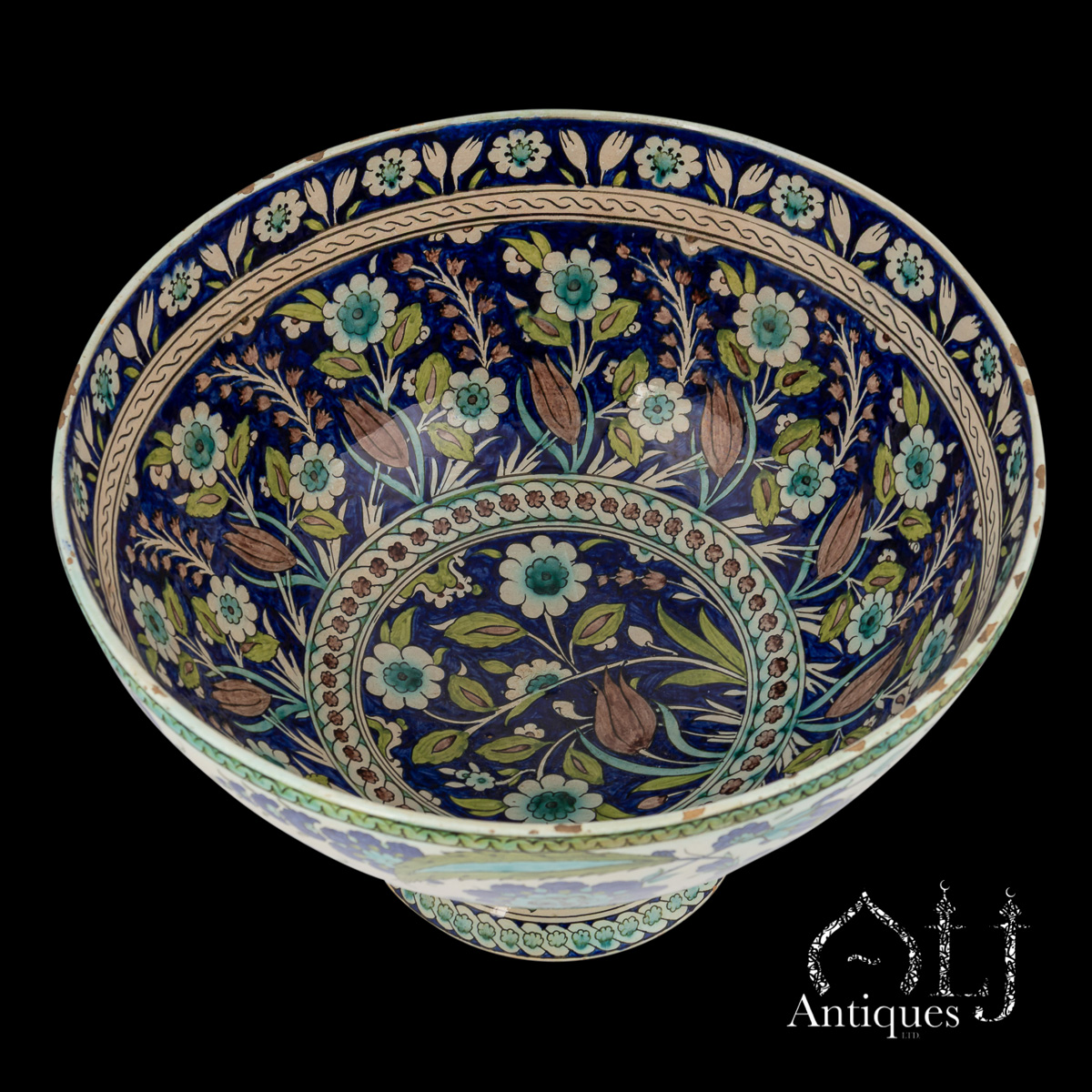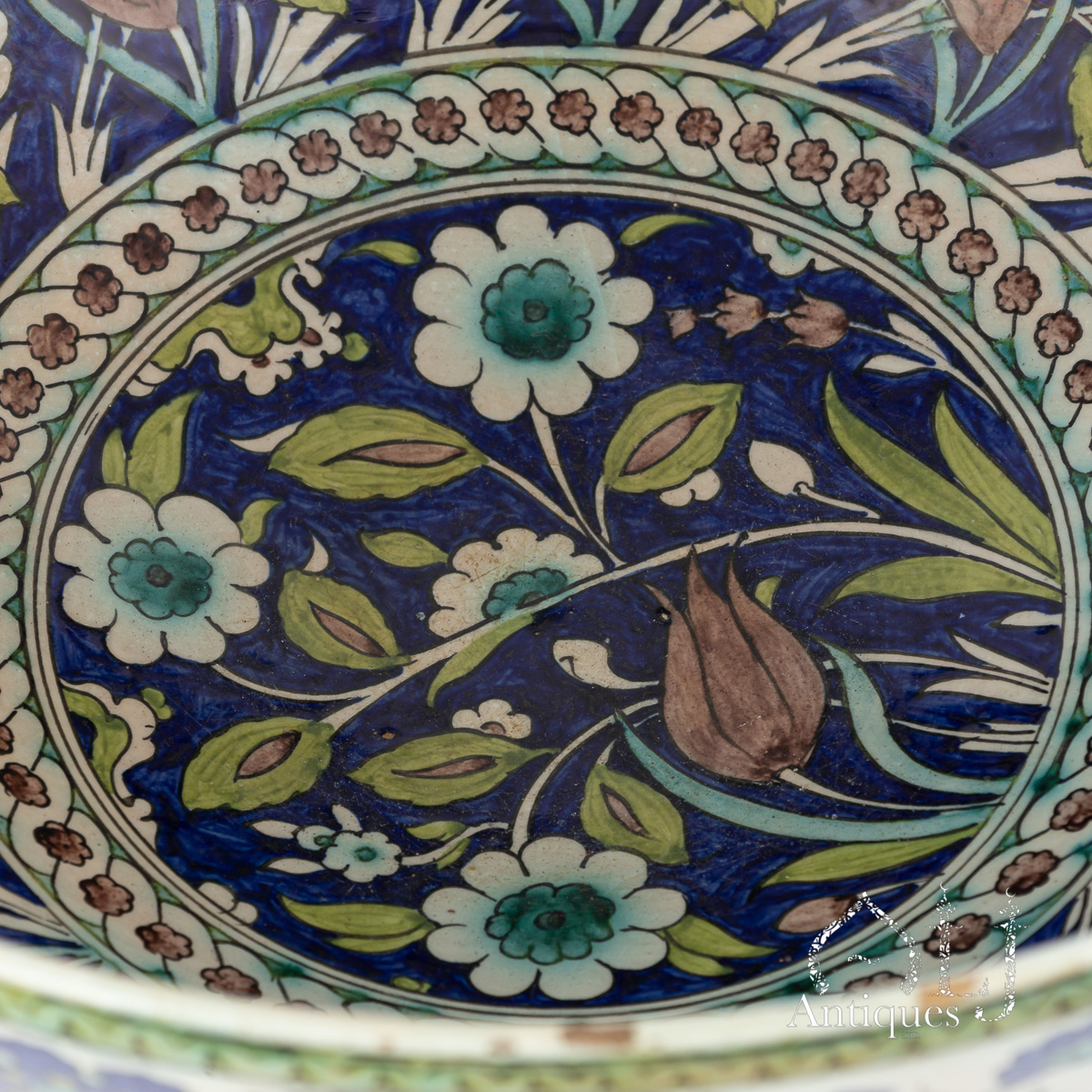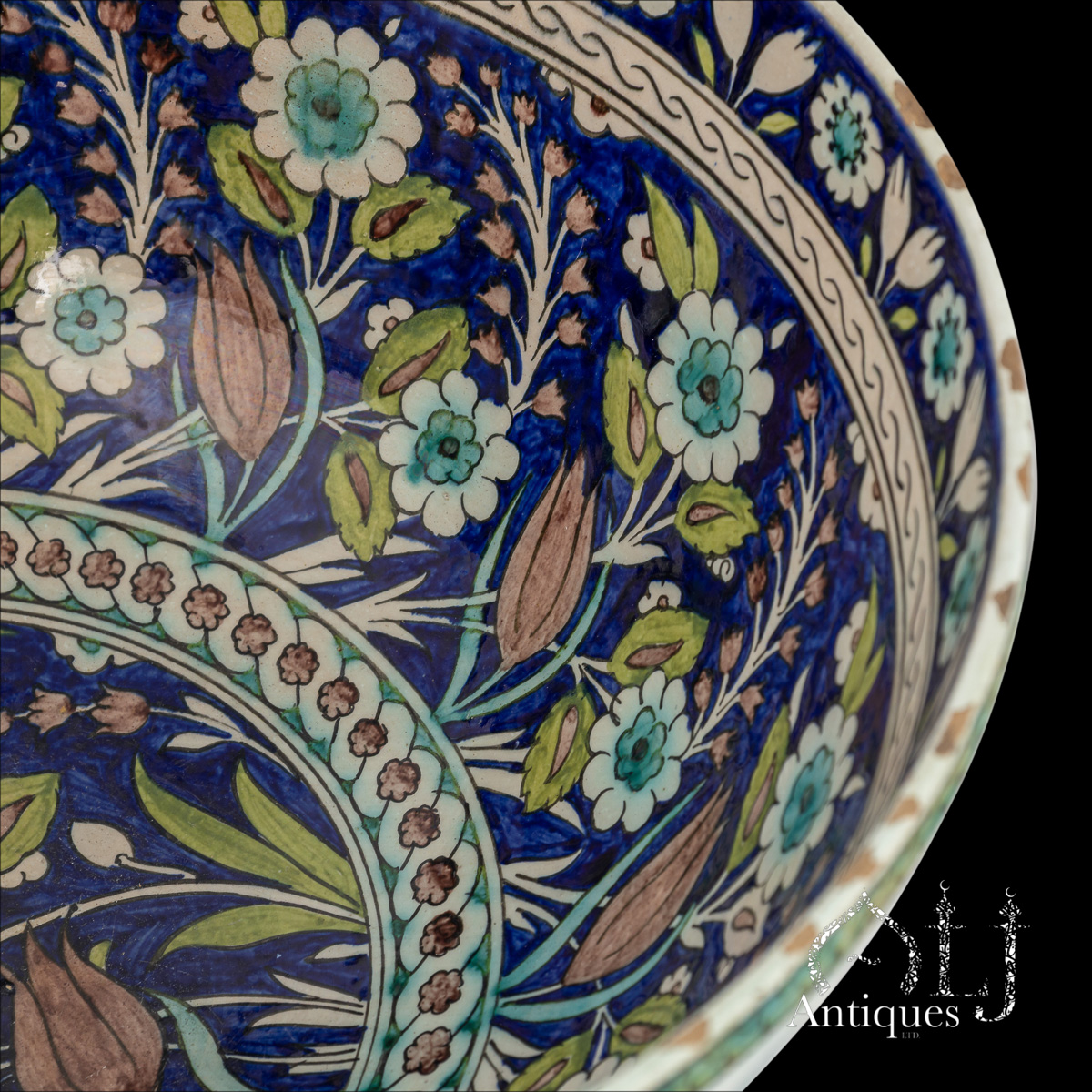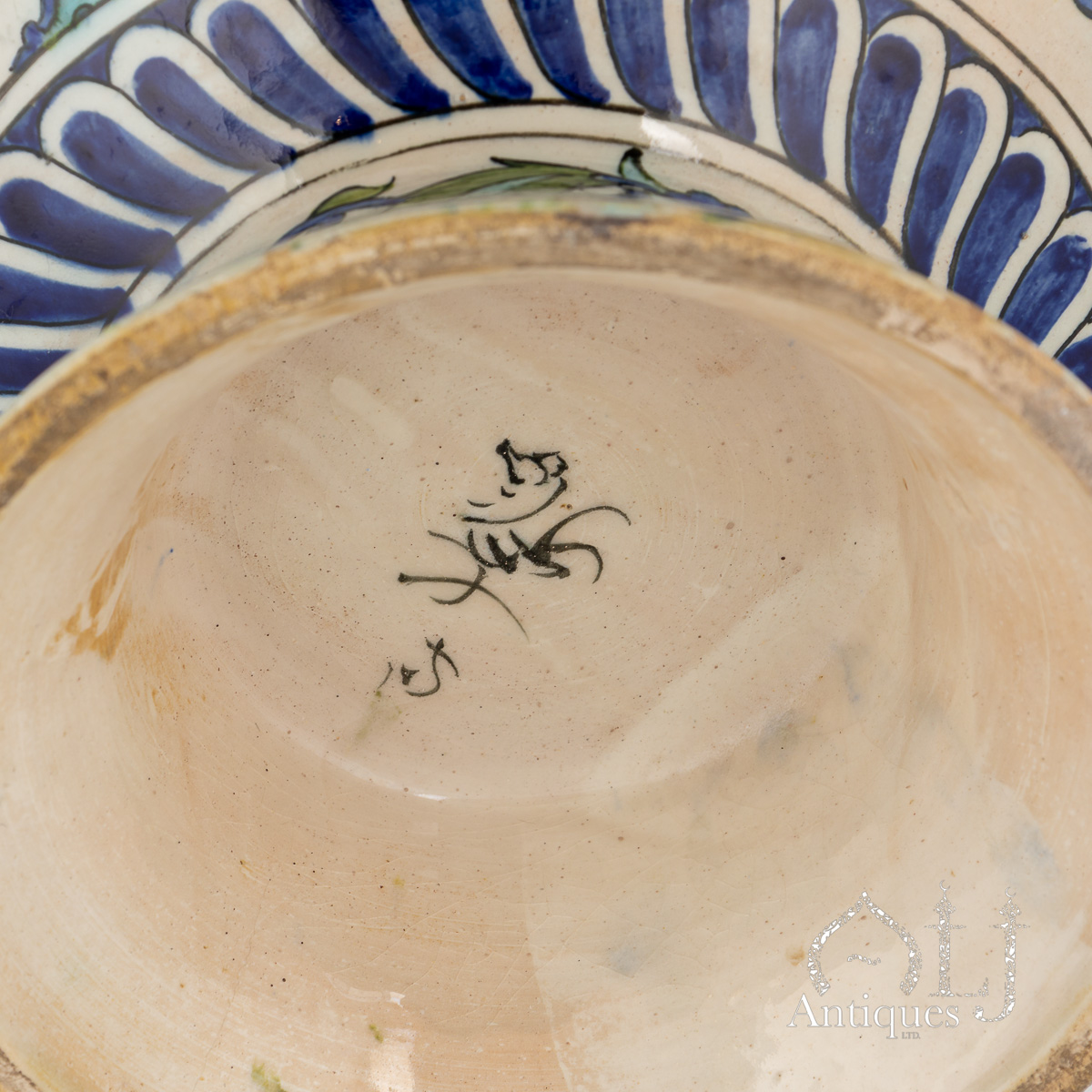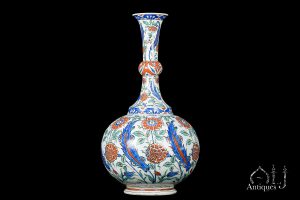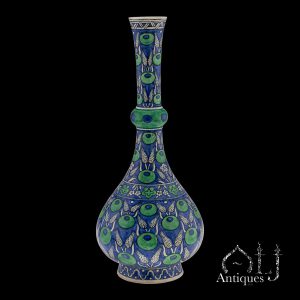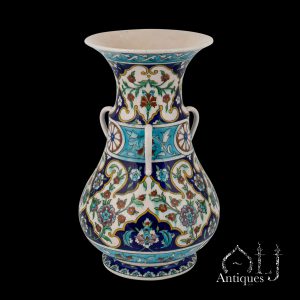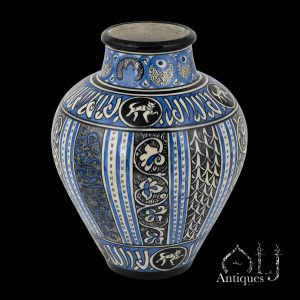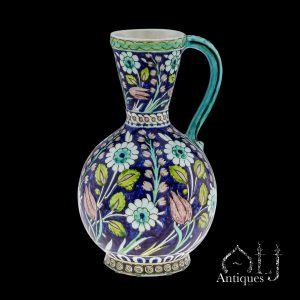Description
An exceptionally rare and finely painted large Iznik “Damascus”-style faience footed basin by Ulisse Cantagalli, beautifully decorated under a transparent glaze in cobalt blue, turquoise, viridian green, and brick red, all outlined in fine black in the Ottoman Iznik manner.
Of deep rounded form rising from a narrow-splayed foot, the interior well is centred with a large stylised motif of three rose branches, surrounded by radiating floral sprays of hyacinths, tulips, and delicate blossoms, arranged in harmonious symmetry.
The upper rim is bordered with a refined frieze of alternating branches of tulips and rose tops, continuing the rhythmic floral theme of the composition.
The exterior is richly decorated with large lotus and tulip palmettes, alternating with scrolling saz leaves and rosette medallions, all painted in vibrant cobalt blue and turquoise against a crisp white ground.
The decoration concludes with an arcade of palmettes above a continuous key-fret band encircling the base.
The underside bears the painted cockerel signature of Ulisse Cantagalli, confirming production at his renowned Florentine workshop during the late 19th century.
Historical and Artistic Context
This elegant basin exemplifies Ulisse Cantagalli’s masterful reinterpretation of Ottoman Iznik and Damascus ceramics, infused with the refined artistry of Florentine maiolica. Founded in 1878, the Cantagalli Manifattura (Manifattura Figli di Giuseppe Cantagalli) became one of Europe’s foremost centres of ceramic revival, merging Renaissance design with Islamic artistic influence.
The form and decoration closely follow 16th-century Ottoman footed bowls from Iznik, Turkey, particularly those in the British Museum, London (inv. G.66) and the Victoria and Albert Museum, London (inv. C.1979–1910), both dated to circa 1545–1550.
These early prototypes, belonging to the “Damascus” group, share the same deep profile, tall splayed foot, and vivid underglaze palette of cobalt blue, turquoise, green, and red.
While clearly inspired by these Ottoman originals, Cantagalli’s version introduces a distinctly Florentine refinement.
The basin is decorated with classical Iznik design, embracing a pure floral composition centred on three rose branches, symbolising grace and renewal, framed by hyacinths, tulips, and lotus blossoms.
The large lotus and tulip palmettes on the exterior panels create a dynamic counterpoint to the more delicate interior, while the key-fret border at the base reflects Cantagalli’s synthesis of Islamic ornament and Renaissance geometry.
The painted cockerel mark, found beneath the base, is the trademark of the Cantagalli workshop and corresponds with authenticated examples held in the Victoria and Albert Museum (London), the Musée des Arts Décoratifs (Paris), and the Metropolitan Museum of Art (New York).



